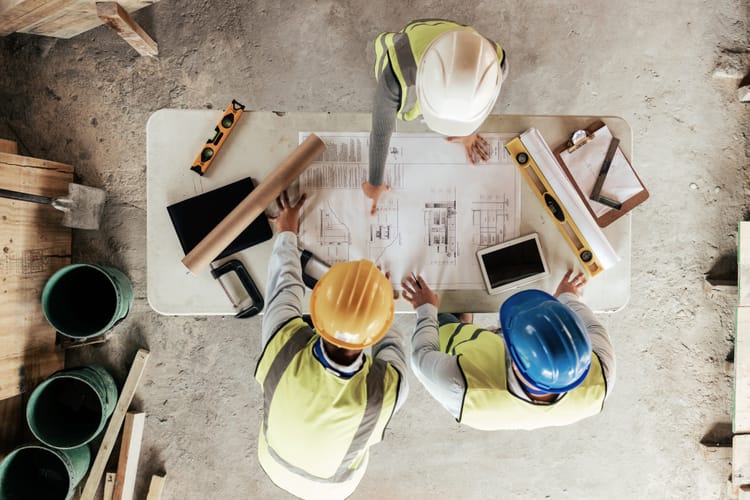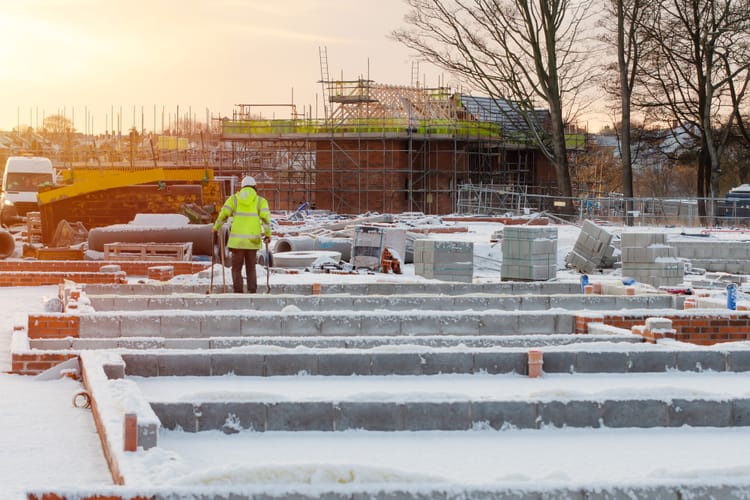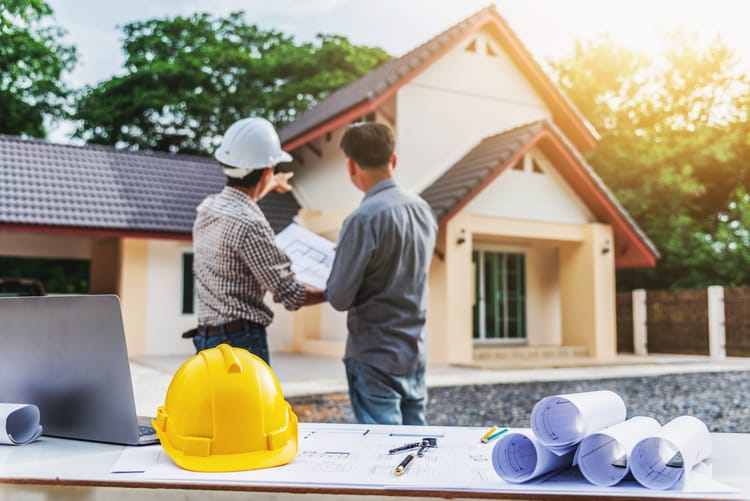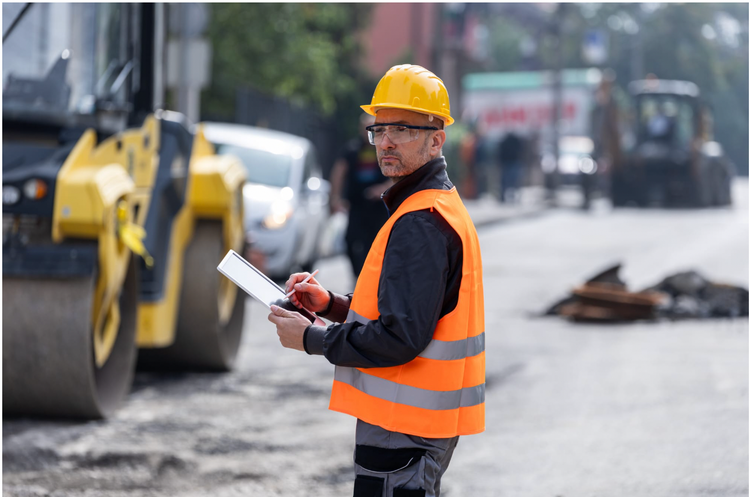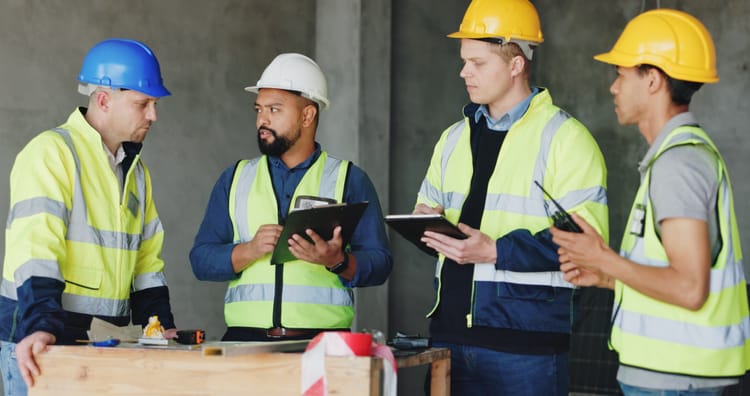What to do if ICE comes to your jobsite

The recent ICE raids being conducted at the direction of the Trump administration are disrupting the industry like never before. We turn to immigration attorney Scott Malyk for clear guidance on protecting your workforce. Then, we tackle two interesting questions: Do fall-detecting smart boots belong on your jobsite? And could the next surge in business come from senior housing? Let’s get into it.

>> Betrayed. A Key West roofing company owner, who voted for Trump, says ICE detained a third of his workforce. "This situation is just totally, just blatantly, not at all what they said it was."
>> Keep it clean. Contractor Spencer Dams explains why a tidy jobsite is good marketing.
>> Feet first. Swedish PPE maker Båstadgruppen has designed a smart construction shoe that detects falls and calls for help.
>> Is this the next addition to your fleet? These sporty little rides could save you money shuttling between urban worksites.

Workforce protection becomes priority as ICE targets construction sites
Construction firms across the country are bracing for impact as the Trump administration’s aggressive ICE enforcement sweeps through labor-intensive industries. We asked immigration attorney Scott Malyk, a senior partner at Meyner and Landis LLP and the go-to advisor for businesses who need counsel on immigration issues, to walk us through the proactive measures every builder needs. -Emily Kelchen
President Trump campaigned on overhauling our nation’s immigration laws and we are now seeing that play out. Were most of the businesses you work with prepared for this shift?
No. It’s created a lot of uncertainty and really disrupted a lot of businesses in the construction industry.
Historically, I-9 compliance was widely ignored by small and middle-market companies. Or for some businesses, perhaps their hiring needs outweighed concerns about potential fines. Now everyone is paying attention, and immigration attorneys like me are urging our clients to take steps to protect themselves and their employees.
What does that look like?
As the old saying goes, "The best defense is a good offense.” That is, the most effective way to protect yourself, your business, and your employees is to be proactive rather than passively waiting for ICE to come knocking at your door:
- Maintain organized employment records and documentation systems.
- Retain qualified counsel who specialize in immigration compliance to conduct a self-audit of your I-9 forms and train your onboarding staff on how to comply with the regulations going forward.
- Enroll in E-Verify if your business is not already enrolled.
- Research different software programs—some specific to the construction industry—that assist you with the proper onboarding of employees, many of which offer an “audit trail” that is easily printed and turned over to ICE in the event of NOI [notice of inspection] issues. But beware, not all such programs get you to 100% compliance, so these programs should be vetted by counsel.
- Designate a response team to an ICE intervention.
What do you mean by response team?
This is fairly straightforward—choose a point person for each location (with a backup) to handle any interaction with ICE (e.g. HR director, compliance officer, legal counsel).
The response team should:
- Know who to contact immediately in the event of an ICE visit (business owners, counsel, human resources) and do so;
- Ask the ICE agents to identify themselves and provide their credentials;
- Request a copy of any documents the ICE agents brought with them; and
- Be familiar with how to verify warrants and respond to such warrants as required by law.
If the ICE representatives are there to serve an NOI, under no circumstances should the response team waive the 3-business-day window provided in the NOI to produce documents, unless legally required. Use this time to work with counsel to review and prepare documents for turnover to ICE.
What are some signs that a business might be on ICE’s radar?
ICE does not forecast its strategies to the public—these are largely covert operations. That being said, ICE has limited resources, so historically, it tends to target businesses in labor-intensive industries for which the agency is confident will have the highest concentration of unauthorized workers, like those in the construction industry.

Boost safety with data on leading indicators
Most contractors evaluate safety programs using lagging indicators, including incident rates and insurance claims, but these insights provide only a partial picture. Adding leading indicators that monitor proactive safety activities—like training sessions, toolbox talks, inspection results and participation—produces a complete view.
A more robust data analysis empowers you to reveal tendencies and trends, budget more strategically and make tangible progress on safety. The ABC’s 2025 Health and Safety Performance Report shows that organizations using both lagging and leading indicators reduced total recordable incident rates by 59% and days away, restricted or transferred rates by 60%.
Why it matters: Don’t wait for accidents to happen. Identify behaviors and conditions that increase risk and be proactive in addressing them. Construction companies that emphasize safety have fewer workers' comp claims and missed work days, signal sincere interest in employee wellbeing, meet project deadlines and hold on to valued employees. In this way, safety is a competitive advantage. (ACHR News)
The business case for resilience
Resilience isn’t just a buzzword; it’s good business, according to Lindsay Brugger, the Urban Land Institute’s vice president of urban resilience. Speaking at the Institute’s 2025 Florida Summit last week, Brugger shared research showing that structures designed with droughts, floods and other climate-related risks in mind deliver solid returns.
Benefits include avoiding or mitigating interruptions and losses, enabling rapid recovery, controlling insurance costs, enhancing property values and attracting grant and investor funding.
Why it matters: In South Florida, for example, adaptive infrastructure projects like seawalls chart a 2:1 return and flood-proofing buildings a 4:1 return. More broadly, a joint report from Allstate and the U.S. Chamber of Commerce notes that every dollar spent on resilience and preparedness generates up to $13 in savings thanks to less damage, lower cleanup costs and limited community economic impact. (Gulfshore Business)
Older adult rental market poised for growth
More than 2 million adults 65 and older will enter the rental market between now and 2035, creating an opportunity for builders to capitalize on tight supply and rising demand. The active adult segment is expected to be particularly lucrative. Cushman & Wakefield analysts add that this category could also be a partial solution to affordability obstacles. Their report cites data from the National Investment Center for the Seniors Housing and Care Industry indicating that more than half of middle-income seniors don’t have the financial resources to afford conventional senior living and care.
Why it matters: With other sectors slowing and the population aging, senior rental housing is worth exploring. Analysts estimate that meeting peak demand would require 35,000 to 45,000 new units annually, beginning this year. (Cushman & Wakefield)

>> Workforce Worries: ICE raids cause concern
>> Busy Burghs: Four hot markets for home sales
>> Research Review: Eating lunch together strengthens teams
>> Clean Construction: 4 emerging technologies to green the industry

“Get everything with your customer figured out beforehand so you don’t have to be waiting… which costs time and money. But when you take the time to have all that designed out and laid out… it’s going to make you be able to be more of an effective contractor.”
—Ron Nussbaum, host, Construction Champions podcast
Designers are key allies for builders, especially when involved early in the process. That’s the upshot from the latest "Construction Champions" podcast in which Nussbaum chats with interiors expert Blima Ehrentreu, founder and CEO of The Designers Group, about how strong collaboration streamlines the process, avoids delays and rework and keeps clients happy.
Thanks for reading today's edition! You can reach the newsletter team at thelevel@mynewsletter.co. We enjoy hearing from you.
Interested in advertising? Email us at newslettersales@mvfglobal.com
Was this email forwarded to you? Sign up here to get this newsletter once a week.
The Level is written by Margot Lester and edited by Bianca Prieto.

